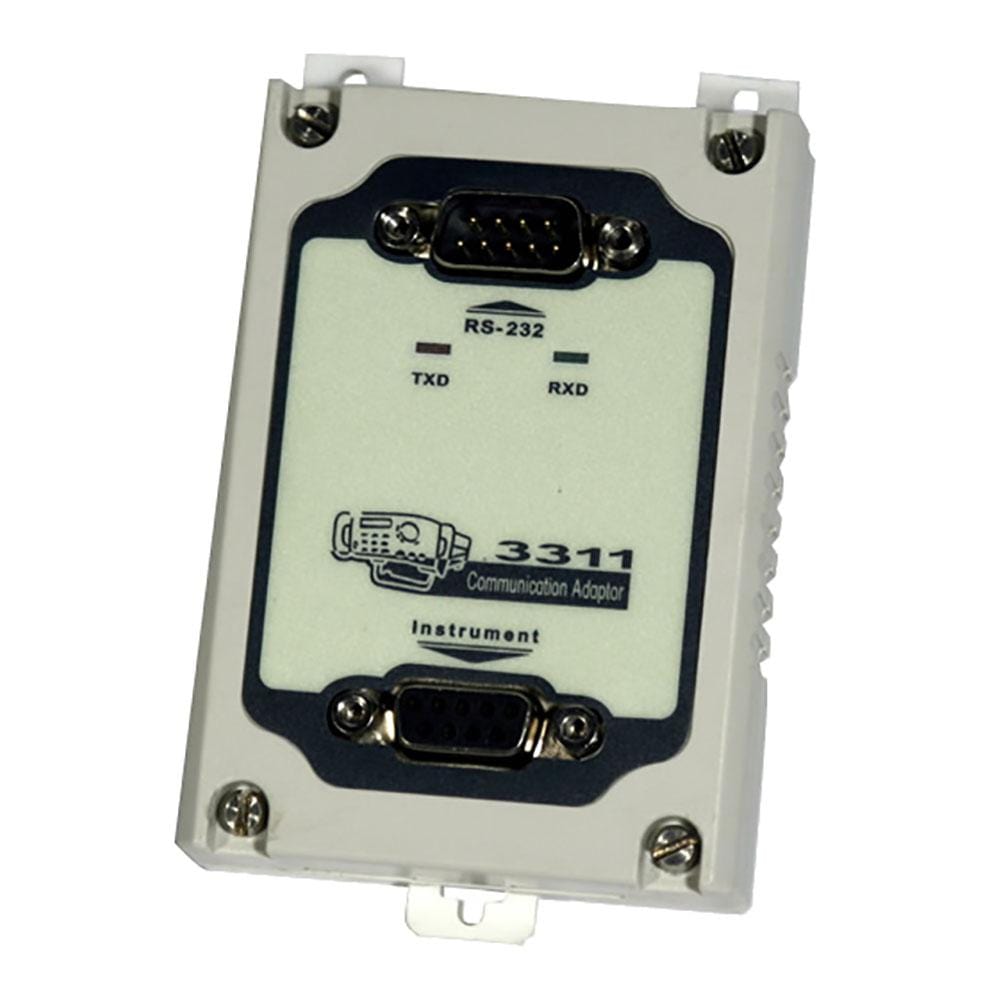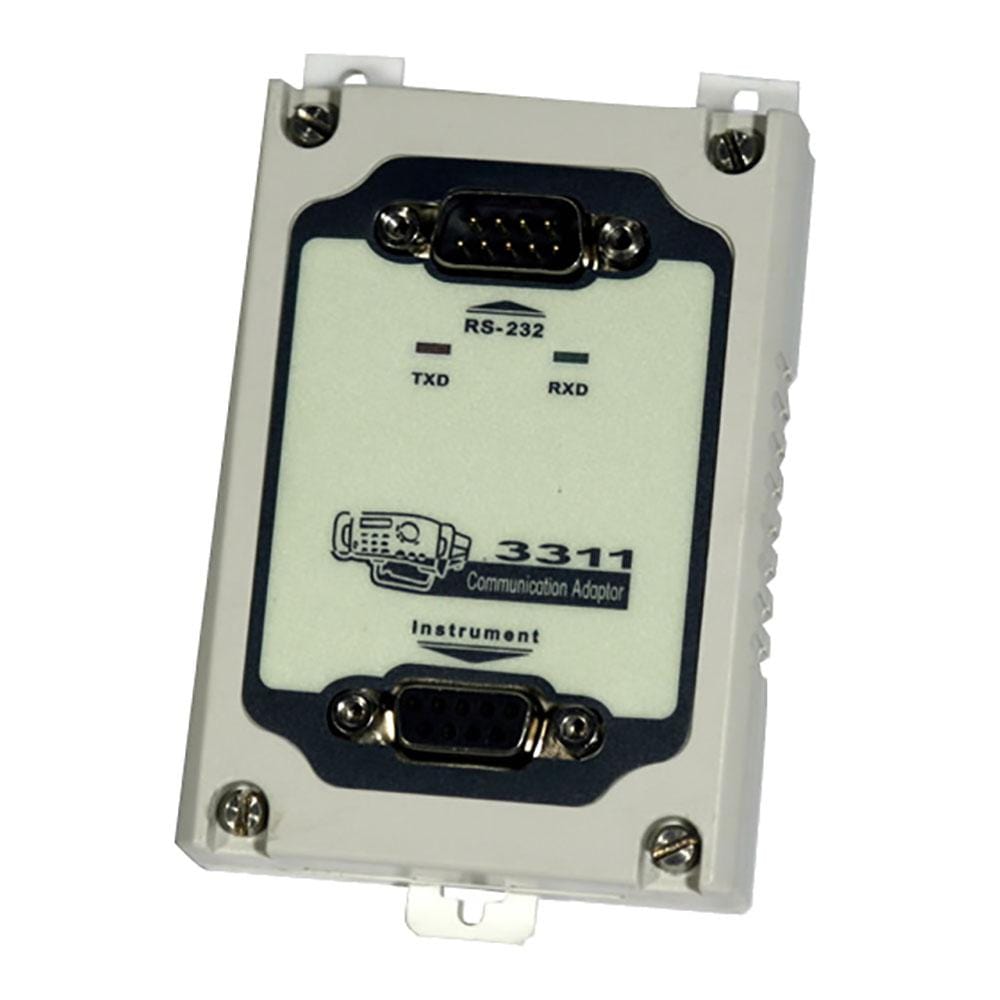
Key Features
Overview
Array Electronic 3311 RS-232C to TTL Adapter provides the correct level-shifting to control Array instruments that expose a TTL-level serial port. Use it to connect a PC’s RS-232C port to Array 364X programmable DC power supplies and Array 371X DC electronic loads for SCPI-style automation and logging.
The adapter is recommended in Array user manuals and is used widely in bench automation workflows. If your PC lacks RS-232, consider the USB variant Array 3312 USB-to-TTL Adapter. For multi-drop networks or longer cable runs, see Array 3313 RS-232C-to-RS-485 Converter and 3314 RS-485-to-TTL Converter. For GPIB systems, Array 3315 GPIB Interface is available.
Why consider 3311?
Array’s 364X/371X instruments communicate at TTL levels internally; connecting PC RS-232 directly risks errors. The 3311 ensures signal integrity and correct logic thresholds between your COM port and the instrument, enabling reliable control from Python, LabVIEW, or other serial tools.
Compatibility
Designed for Array 3644A/3645A/3646A power supplies and 3710A/3711A/3715A electronic loads. Typical use: instrument setup, automated sweeps, and long-term logging where a deterministic serial link is preferred.
Downloads
Why Engineers Choose The Array 3311 RS-232C to TTL Adapter for Array 364X/371X
Recommended Interface For Array Instruments
Fast Integration
Deterministic, Driverless Link
Overview
Array instruments expose a TTL-level serial port. The 3311 translates PC RS-232C to TTL, ensuring correct logic levels and robust communication for scripting, automation and data logging.
Where It Fits
- 3644A/3645A/3646A Array 364X PSU series
- 3710A/3711A/3715A Array 371X DC loads
Why It Matters
| Feature | Why It’s Important | What You Gain |
|---|---|---|
| Correct Level Translation | RS-232C uses bipolar signalling; Array ports expect TTL. | Reliable framing, fewer comms errors, safe operation. |
| Array-Specific Pin-Out | Matches instrument wiring and addressing conventions. | Drop-in setup; no custom harnesses. |
| Binary Command Frames | Simple 26-byte frames for control and readback. | Deterministic timing and easy parsing. |
| DB9 Connectivity | Standard cabling with strain relief. | Good EMI immunity and serviceability. |
Choosing Alternatives in the Series
For multi-drop or long runs, use 3313 (RS-232↔RS-485) with 3314 (RS-485↔TTL). For GPIB racks, see 3315.
Competitive Landscape
| Type | Example | Notes | When To Prefer 3311 |
|---|---|---|---|
| Brand-specific RS-232↔TTL | Array 3311 | Matches Array manuals and pin-outs. | Controlling 364X/371X without rewiring. |
| Generic RS-232↔TTL | MAX32xx-based converters | May need custom wiring; variable quality. | When you need guaranteed Array compatibility. |
| Other brand adapters | e.g., Maynuo, B&K kits | Sometimes isolated; different pin-outs. | Use 3311 unless isolation or other brand required. |
Getting Started
- Set instrument address and baud (e.g., 9600 8-N-1) via the instrument menu.
- Use a straight-through DB9 RS-232 cable PC ⇄ 3311. The 3311 connects to the instrument’s TTL-level port.
- Send a status query frame to confirm communication, then enable remote control and output/load as needed.
Wiring Quick-Start (364X & 371X)
Minimum Signals You Need
| PC (DB9 DTE) | Signal Direction | Through 3311 | Instrument Port (TTL) | Notes |
|---|---|---|---|---|
| Pin 3 (TXD) | PC → Instrument | Level-shifted | RXD (TTL) | Transmit from PC arrives at instrument RXD. |
| Pin 2 (RXD) | Instrument → PC | Level-shifted | TXD (TTL) | Instrument TXD returns to PC RXD. |
| Pin 5 (GND) | Common | — | GND | Shared reference; keep cables short and shielded. |
RTS/DTR hardware flow control is not used by these models; leave it disabled in software. If you get no replies, swap to a null-modem RS-232 cable only on the PC⇄3311 leg and retest.
Serial Defaults (Factory)
| Model Family | Baud | Data | Parity | Stop | Address Range |
|---|---|---|---|---|---|
| 364X Power Supplies | 9600 (menu-selectable 4800–38400) | 8 | None | 1 | 0–31 |
| 371X Electronic Loads | 9600 | 8 | None | 1 | 0–254 |
Command Frames & Code Snippets
These models use a simple 26-byte binary frame (header 0xAA, address, command, payload, checksum). Checksum is the unsigned sum of bytes 1–25 (mod 256). Below are safe “first actions” you can send to verify comms and toggle control.
364X Power Supplies — Read Status & Enable Output
- Query status: Command 0x81 (26-byte frame). Returns V, I, P and flags.
- Set control: Command 0x82 with Byte4 bits: b1=1 Remote, b0=1 Output ON.
# Python 3 + pyserial
import serial
def make_frame(addr, cmd, payload=b""):
frame = bytearray(26)
frame[0] = 0xAA
frame[1] = addr & 0xFE # instrument address
frame[2] = cmd & 0xFF
payload = (payload or b"")[:22] # bytes 4..25 available
frame[3:3+len(payload)] = payload
frame[25] = sum(frame[:25]) & 0xFF
return bytes(frame)
def send_recv(port, frame):
with serial.Serial(port, 9600, bytesize=8, parity='N', stopbits=1, timeout=1) as s:
s.write(frame)
return s.read(26)
ADDR = 0x00 # default
# 1) Read PSU status
resp = send_recv("COM3", make_frame(ADDR, 0x81))
# bytes 4..11 carry I (mA), V (mV), P (mW) little-endian groups
I_mA = resp[3] | (resp[4] & 0xFF) << 8
V_mV = (resp[5] | (resp[6] & 0xFF) << 8 | (resp[7] & 0xFF) << 16 | (resp[8] & 0xFF) << 24)
P_mW = resp[9] | (resp[10] & 0xFF) << 8
# 2) Remote + Output ON (Byte4 = 0b00000011)
resp = send_recv("COM3", make_frame(ADDR, 0x82, bytes([0x03])))
print("PSU status read; output enabled.")
To set limits and a voltage setpoint, use command 0x80 (max current, max voltage, max power, Vset). Start by reading status first to confirm framing and checksum handling.
371X Electronic Loads — Read Status & Turn Load On
- Query status: Command 0x91 (returns I, V, P and limit fields).
- Set control: Command 0x92 with Byte4 bits: b1=1 Remote, b0=1 Load ON.
# Read 371X status then enable load
ADDR = 0x01 # example non-default address
resp = send_recv("COM3", make_frame(ADDR, 0x91))
I_mA = resp[3] | (resp[4] & 0xFF) << 8
# Voltage is reconstructed little-endian 32-bit then scaled
V_mV = (resp[5] | (resp[6] & 0xFF) << 8 | (resp[7] & 0xFF) << 16 | (resp[8] & 0xFF) << 24)
P_mW = resp[9] | (resp[10] & 0xFF) << 8
# Remote + ON
resp = send_recv("COM3", make_frame(ADDR, 0x92, bytes([0x03])))
print("Load status read; load enabled.")
Typical Troubleshooting
- No response: Confirm baud, address, straight-through cable on PC⇄3311, and shared GND. Try a different COM port.
- Framing errors: Replace cable with shielded DB9; keep total run short; ensure only one level shifter (the 3311) is in the path.
- Wrong instrument responds: Each unit has an address; set unique addresses via the front panel.
Why This Helps You Ship Faster
With the 3311 handling level translation and the example frames above, you can verify communications in minutes, then wrap higher-level control in your preferred language or NI-VISA workflow for regression tests, sweeps and long-duration logging.
| General Information | |
|---|---|
Part Number (SKU) |
3311
|
Manufacturer |
|
| Physical and Mechanical | |
Weight |
0.5 kg
|
| Other | |
Warranty |
|
HS Code Customs Tariff code
|
|
EAN |
5055383600618
|
Frequently Asked Questions
Have a Question?
-
How do I confirm communication?
Open a terminal at the set baud rate and send a simple IDN/STATUS query per your instrument’s manual. Ensure instrument address/baud match and the cable is straight-through.
-
Is this suitable for multi-instrument control?
For one-to-one control, use the Array 3311. For multi-drop networks or long distances, RS-485 is better; see the 3313 and 3314.
-
What if my PC has no RS-232C port?
Use a quality USB-to-RS-232 adapter upstream, or choose the native Array 3312 USB-to-TTL Adapter.
-
Will this help avoid framing errors?
Yes. It ensures correct logic-level translation between RS-232C and TTL, preventing framing/overrun errors that occur with direct, non-translated connections.
-
Can I script control from Python or LabVIEW?
Yes. Use any serial library (e.g., pyserial, NI-VISA). Array instruments accept SCPI-style strings over the 3311 link.
-
What baud rates are supported?
T typical Array default is 9600 8-N-1. Higher rates may be configured on the instrument; keep cable runs short and use shielded RS-232 cables for signal integrity.
-
Is galvanic isolation provided?
No, the 3311 is a level-shifting adapter, not an isolator. If you need isolation, use an isolated RS-232 or USB isolator upstream of the adapter.
-
Do I need a null-modem cable?
Most setups use a straight-through DB9 cable from the PC to the 3311. If you don’t receive responses, try a null-modem cable and verify TX/RX orientation in your serial program.
-
Is it compatible with Array 3710A/3711A/3715A electronic loads?
Yes. It provides the required TTL-level serial interface for 371X loads. For multi-drop, consider the Array 3313 RS-232C-to-RS-485 with the 3314 RS-485-to-TTL connected to the instrument.
-
Will this adapter work with my Array 3644A/3645A/3646A PSU?
Yes. It’s the recommended RS-232C-to-TTL interface for 364X power supplies. If you prefer USB control, see the Array 3312 USB-to-TTL Adapter.

